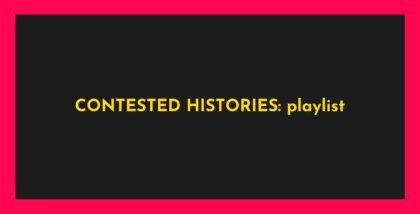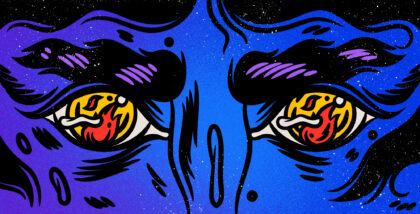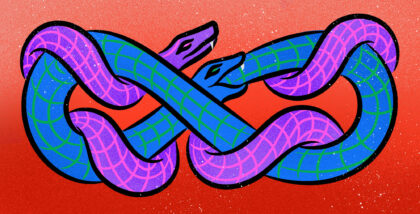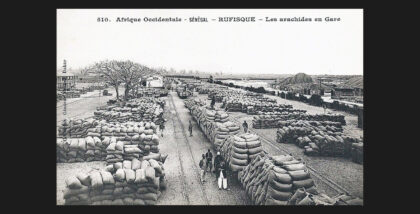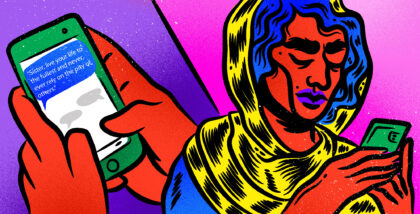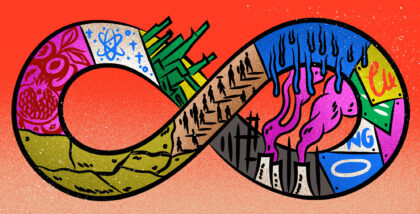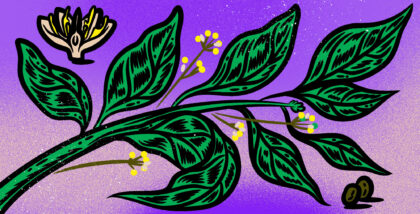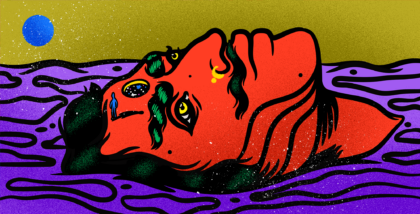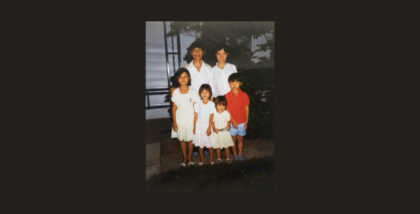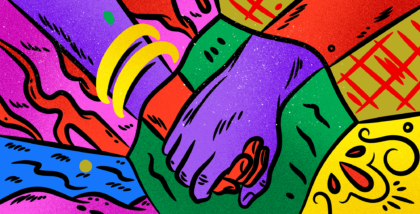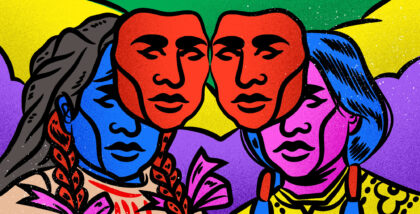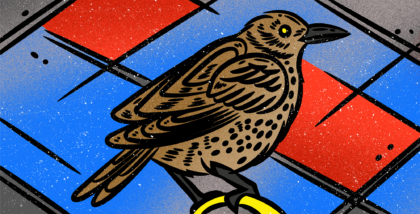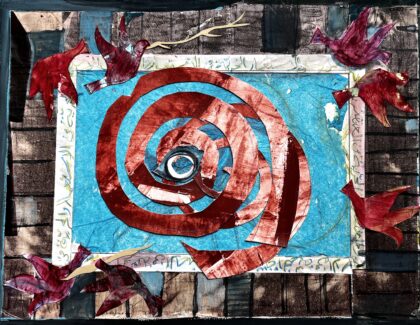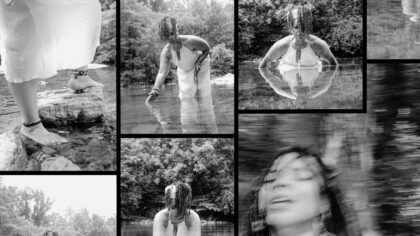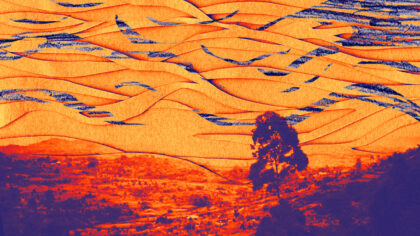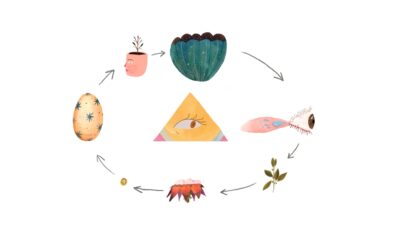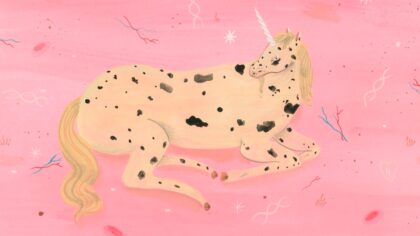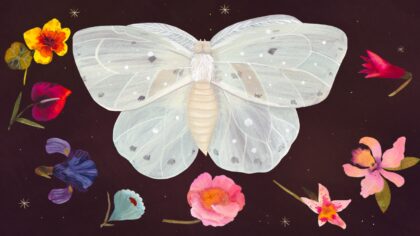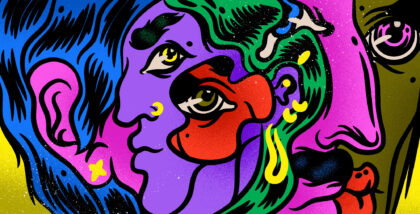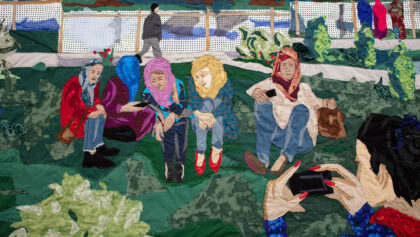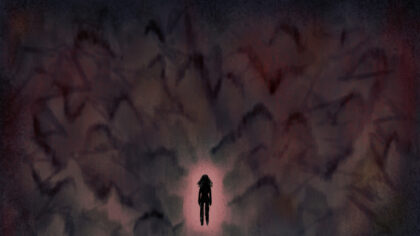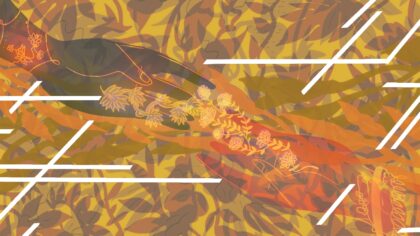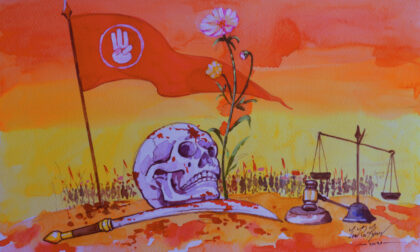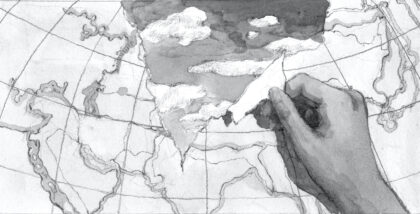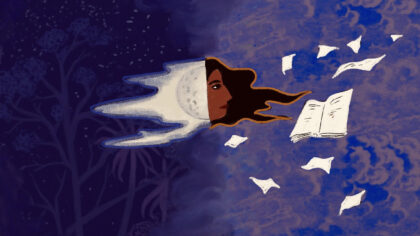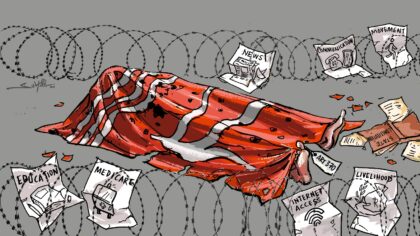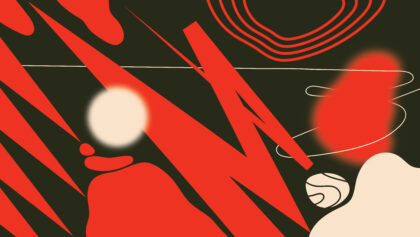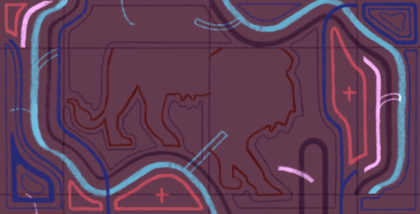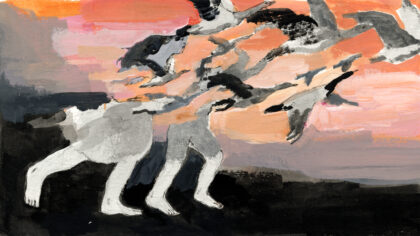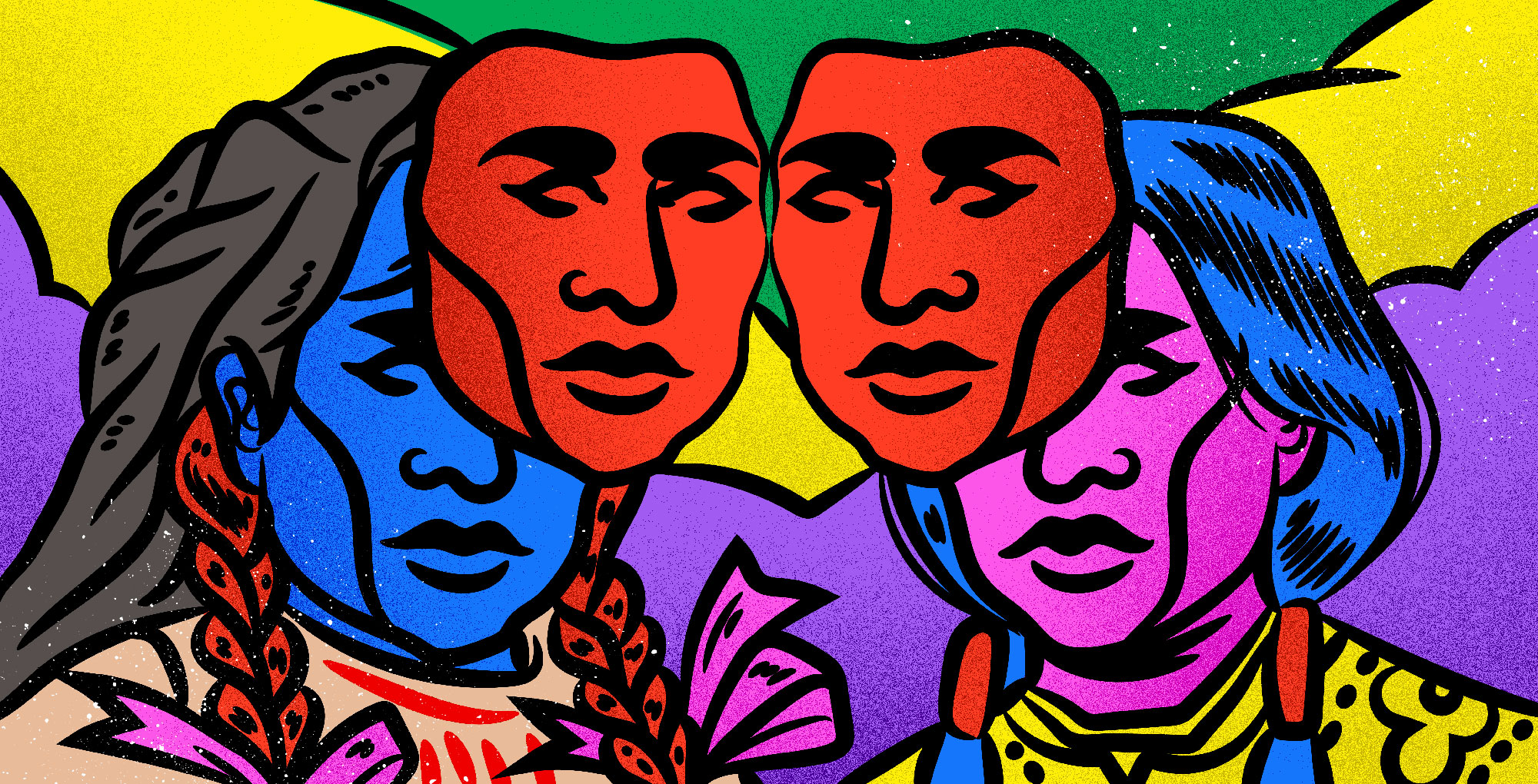 Art by Osheen Siva
Art by Osheen Siva
Translated from the Spanish with no knowledge of Ayuujk by JD Pluecker.
See below for original Ayuujk text.
Systems of oppression dole out many notions of identity on platters, ready for consumption. I didn’t find out that I was Indigenous until I moved to the city. I didn’t find out that I was Indigenous until I learned Spanish. I’ve met other women from around the world, I’ve come to know of their existence: women who are very different from me, women who wear silver, women who inhabit land in snow I’ve never seen, women whose bodies are not made of corn, women who say the word “powwow.” I’ve come to know of Mapuche women, Sami women, Ainu women, Lakota women. Someone has said that, despite all our differences, we share something in common: we are Indigenous, they have said that. We are Indians, they have said that.
But my grandmother, a woman who only spoke Ayuujk, refused. “I am ayuujk jä’äy,” she’d say in the Ayuujk language. “I don’t even know what it is to be ‘Indigenous.’” My grandmother refused to eat off the platter she’d been served by colonial oppression, but nevertheless, despite her rejection of it, the word Indigenous loomed over her head, it pursued her, it classified her as such in sterilization programs, in the population census, in the beatings her kids received for speaking Ayuujk in schoolrooms. Despite refusing the platter doled out by the system of oppression, it still took its toll on my grandmother’s life, body, and very existence.
There are women who have tried to escape, women who have no interest in being good Indigenous women, and they fight boldly to be Ayuujk, to be Cree, to be Aymara, to be Zulu. There are moments when we can separate out our existence as being Indigenous from being Ayuujk: when I experience joy as I contemplate the first tender shoots of corn, I am solely Ayuujk; when the xëëmaapy divines my future by reading the thirteen corn grains, I am solely Ayuujk; when I gather up the hairs that are pulled out by my brush and save them in a small bundle, I am solely Ayuujk. The system is held in abeyance, sometimes, for a just moment. The drops of dew glistening at dawn lure me into a trance, and I forget that I am also Indigenous. The happiness of that contemplation connects me to a genealogy, to the long line of all Ayuujk people who have dreamed of a field of tender cornstalks coated with dew, sparkling like silver. But later, being Indigenous strikes again and it pounds me with its classificatory whip. They have affixed the word Indigenous to my identity so firmly that sometimes it replaces being Ayuujk. It has been affixed so firmly to our faces that it becomes a mask that tries to pass itself off as skin, to eclipse our own self-image. They know what it is to be Indigenous, how I should look to be Indigenous, how my life should be to be Indigenous, but they know practically nothing about what it is to be Ayuujk, about how it is to be Ayuujk. As Ayuujk women, we know all of that quite well.
All of us preserve—in the memory of our languages, of our daily gestures, of our thoughts and our actions—a time when we were Ayuujk women, Sami women, Ainu women, Cree women, Aymara women, or Zulu women, without being Indigenous. It was a time that lasted thousands of recorded years in cyclical calendars of our own. The oldest archeological evidence of populations that spoke an ancestor of my language date back five thousand years, so let’s take that date, arbitrarily, as a beginning of something. Out of those five thousand years of being Ayuujk, we have only been “Indians” for 500 years. Out of those five thousand years of being Ayuujk, we have only been “Indigenous” for 200 years. For the Spanish crown, the Ayuujk people were an Indian people; for the Mexican state, the Ayuujk people are an Indigenous people. We were not always Indigenous; we remember that fact, despite it all. And that memory reminds us that a future can exist in which we might become Ayuujk, Lakota, or Quechua again, without being Indigenous. It is possible, because it was possible.
But, for now, we face the brutality of the classification system that attacks us as women. The law in Mexico says I am Indigenous if I self-assign myself to that category, but in fact I am Indigenous if I speak an Indigenous language. The logic is perverse. We recall the violence on the bodies of girls and boys to force them to give up their language: the beatings, the bullying, the canings as public policy to stop people from speaking Ayuujk, but then in order to be Ayuujk, of course, you must speak Ayuujk. And then they hold up women as the guardians of the language, as if the loss of their language were their sole responsibility. And for other women, in other nation-states, the blood quantum was established as a mode of confinement; in Canada, until almost the mid-1980s, if a woman classified as Indigenous married a white man, she ceased to be Indigenous before the eyes of the state. In other countries in the southern reaches of the continent, women in relationships with men who do not have last names considered Indigenous cannot bequeath those last names to their daughters because they are inherited in a patrilineal fashion. A decision that belongs to women—choosing the person with whom they want to form a couple or have children—becomes a means for nation-states to control who is or is not Indigenous. Luckily, being an Ayuujk woman, a Cree woman, or a Mapuche woman (being recognized and recognizing herself as such) cannot be controlled by national laws. Being Indigenous is a legal matter, though being Ayuujk is something else.
What do we have in common, all of the women in the world who are called Indigenous—so different from one another, with such contrasts between us? I don’t know all these women, I don’t know their territories, I don’t know their rituals, I haven’t done their dances, but being Indigenous unites me with them. And being Indigenous is a moment in our history created by colonialism. Indigenous is not an ontological category; there is nothing essential about it, nothing determinant. Indigenous is not a cosmovision or a culture, it is a political category. We are Indigenous women because we belong to peoples who have suffered under colonialism and who, later on, have been enclosed within nation-states that attack our very existence. We are peoples without states, peoples who have been able to organize our lives communally without states.
But within the category of “Indigenous,” a certain strength is to be found; given the situation, “Indigenous” could be a force of resistance. How do we join together the force of all of us women who are confined in this category, in order to explode it? Let’s resist as Indigenous women in order to cease to be Indigenous. Let’s unite as Indigenous women in order to cease to be Indigenous in all our diverse forms, in a world without nation-states that tell us that we are Indigenous and tells us how to be Indigenous as well. We will go back to being solely Cree, solely Aymara, solely Sami, solely Ayuujk women. At dawn’s first light, we’ll contemplate the silvery sheen of the dew glimmering on the cornstalks. Until that moment.
Ojts nakxëëmo’0yë’n
Akäts, ka’t y’ayuujk, ka’t ja ayuujk tkajpxy. Pëmëte’ep ää ayuujk mejts mkajpxy, ka’t ëjts nnëjäw, ja’y ëjts nnëjäw ku akäts mejts. Pën mmëtookukëp yä’ät ää ayuujk ka’t mejts m’akäts, ok wa’n ojst xakyujy, ok wa’n ayuujk jä’äy atom. Nayte’n atom tam ayuujk jä’äyë’n tëkatsy ja xëë nnaymo’oyë’n, jaa kukäjp, jaa japye’kxy. Tëkäjtsp ja käjp tu’uk tu’uk, tëkäjtsp ja ayuujk.
Nayte’n ja akäts xnëmatyääjkyë’n, pënëk te’n atom. Ojts nak’akajxmujkyë’n, tu’uk jëëjpy ja’y, “indigenous” te’nëk atom, nëm wyä’änt, nëm kyäjpxt, nëm myatyä’äk. Ka’t ëjts ka’pxy nmëtookuk tii te’n yë’ kyäjpxtëp, jatii ku tu’uky nakxëëkuxääjxyë’n. Jam jä’äy te’ep timy jakam tsënaatyëp, jam mää ja tëtst kajaa y’ityë’n, mää ja xux myäta’äkyë’n, nayjëte’n ja’ yaktejt “indigenous”; ey ka’t atom në’amuk nnay’ejx’äjtyë’n, tu’uky ja xëë nakmo’oyë’n. ¿Jatii?.
Mëtu’uk piky: yë ayuujk “indigenous” ka’t yë yakxon yakkäjpxnaxy ayuujk, ka’t atom kë’m te’n nakyxëëkuyääjxyë’n, ja men jä’äy y’ää y’ayuujk yë’. Ku jatu’uk jä’äy n’ämtoojënpejtë’n, mëte’ep te’n nayte’n yakxëëmeepy, pën jajp tu’uk ää ayuujk tmëët’ätt te’ep nëkajp tam “indigenous”, anäntëp ku ka’tëp, anäntëp ku amaxän ää yë’ ja’y tyunkpääty. Te’n te’n nmëtookukyë’n ku nakam ja ää ayuujk myiny te’ep ojts ttanëpëtääk ku te’n atom nakxëëmoo’oyë’n.
Mëmajtsk piky: ku ojts 500 jëmëjtëp ojts yää jyä’ätt ja amaxän jä’äy, jekyëp’etëp ijty atom yää njujky’äjtyë’n, ayuujk jä’äy ijty atom, ayuujk ijty nkajpxyë’n ayuujk jënmä’äny ijty naktunkpääjtyë’n, kë’m tsënä’äyë’n tënä’äyë’n ijty tunkpätp, ka’t ijty atom pën “indigenous” xtijyë’m; ku ojts jyä’ät ta ojts ja nääjx tpëkt. Pënety ijty yää tsënaatyëp, “indian” ojts ja txëëmo’oty. Ta ojts ja pä’äm jëts ja jotmay tyëk. Ku ojts ja xëë “indian” jyä’äty, ojts jyä’äty nayte’n ja tëkatsy jënmä’äny, ja tëkatsy ayuujk, ja tëkatsy jujky’äjtë’n; te’n ja jyënmaaty ku tu’uky atom yää, tam jëkeexy ka’t ja tsënä’äyë’n tu’uk tu’k jä’äy tyëkatsy, ojts te’n tmatyä’äkt pën jajp atom änmëjä’än nmëët’äjtyë’n ok juyujk atom. Ojts nayte’n taktsäätsyët. Ja’ jä’äy ojts te’n atom xxëmo’0yë’n
Mëtëkëëk piky: Tëkëëk mëke’pxy jëmëjt ojts te’n nyaxy, ja amaxän jä’äy y’u’nk y’anä’äjk ojts ttanëpëtääkët ku apiky ja anä’ämë’n yää taksto’ntä’äkä’änt, Nëwemp ojts yä’ät et txëëmo’oty. Ka’t ojts atom nak’amtoojënpijtyë’n pën ntsojkyë’n ku ja jemy anä’ämë’n naktsontääjkë’n mëët ja amaxän jä’äy. Natyu’uk ojts ja’ nya’ane’emyët, natyu’uk ojts ja jyënmä’äny taktunkpäätt. Ja’ te’n ojts ttanëpëtä’äkët ku ka’t atom “indian” ja’y, ku “indigenous” atom nayte’n. Te’n ojts ja jënmä’äny tpëtä’äkt ku ka’t atom ntsënä’äyë’n ntënä’äyë’n tsyoopääty, ku kyutëke’ety.
Mëmaktäxk piky: Ka’t atomëp ojts ja’y te’n njäjtyë’n, may ja käjp jënë’n et nääjxwyi’nyët nayte’n ojts jyätt kyëpatt, ja jä’äy mëte’ep jam Europe et tso’ntëp, ja ojts jemy anä’ämë’n taktsontä’äkt jëts ja patkë’mët jä’äy te’ep jayeen ojts ja et tjëntsënaatyëp ka’t ojts ja’ y’ukakmëjpëtäknët, ja’y ojts yak’anëëmaaty ku ka’t ja jyënmä’äny y’uktsoopätn, ku ja’ jyujky’äjtë’n te’n kutëke’epy.
Japety atom në’amuk ojts naktijyë’n “indigenous”, ja jä’äy mëte’ep ayoop, ja jä’äy mëte’ep ka’t ja jyënmä’äny tsoopätp, ja jä’äy mëte’ep ka’t ja anä’ämë’n ojts taktsonta’aky, ja jä’äy te’ep ka’t yaktsojkp, te’ep yak’ëjxwejtsp, ja jä’äy te’ep jënë’n jëntiky nääjxwi’nyët ja jyënmä’äny yak’ëjxwejtsp, yak’awajxp.
Tsyäänëm atom “indigenous” naktijyë’m, tsyäänëm atom te’n ja men jä’äy ja xëë xmo’oyë’n. Jënmä’äyë’n xë’n ntu’unë’n jëts jatëkoojk ja’y ayuujk jä’äy nxëë’äjtë’n, tam ijty jëkyëp ntsënä’äyë’m, tëkatsy tu’uk tu’uk ja jënmä’äny, tëkatsy tu’uk tu’uk ja ää ayuujk, tëkatsy tu’uk tu’uk jä jä’äy jëts ja käjp. Pën tëë jeky atom tëë te’n njujky’äjtyë’n, pyatpy ku jatëkoojk njamyajtsë’n ku ayuujk atom jayeen.
Kum jëti’inyë’m ja jä’äy te’ep ojts jyä’ätt yää ja ana’amë’n tkëjë’m’ätt, kuwan ku atom te’ep “indigenous” naktijyë’m ja jënmä’äny naktukmujkë’m jëts naktëkäjtsë’n ja tsënä’äyë’n tënä’äyë’n, nnaymujkyë’m tam “indigenous” jä’äyë’n jëts ka’t näjty atom n’u’nk n’ap te’n y’ukakxëëkuyääjxënyët. Tu’uk muk te’n ja mëjk’äjtë’n ntu’unë’n jëts ka’t tu’uk ja’y ja ana’amë’n ja’y nakmëjtëjkyë’n, ku ka’t tu’uk jënmä’äny ja’y myatä’äkët jëts jatu’uk, mete’ep jantsy tëkatsy, yak’ëjxwetst.
Jantsy ku timy tëkatsy atom, ja jä’äy te’ep indigenous naktijyë’m, jantsy ku ka’t tu’uk ja jujky’äjtë’n yakmëët; japety jate’n atom naktijyë’m ja’ ku ka’t kë’m ana’amë’n ojts tkupëkt ku naknääjxkëtääjkë’m, ku kë’m ja men jä’äy ja y’anä’ämën ojts xtakuwan’äjtyë’m. Ku atom tu’uk tu’uk ja kë’m ana’amë’n jatëkoojk nakmëjyë’m nakmayë’n, ja “indigenous” ää ayuujk ka’t y’uktsoopäätän, ka’t nitii y’uknëkäjän, ka’t atom te’n n’ukakxëëmo’oyä’änyë’n jëts tëkatsy atom jatëkoojk ja nkë’m xëë yakjamyatsä’än, tëkatsy atom ja nkë’m et yakjamyätsä’än, pën tëtst, pën xujxp, pën änp, pën tuup. “Indigenous” atom nakxëëmo’oyë’m ja’ ku ja men jä’äy ja y’anä’ämë’n ojts xtakuwan’äjtyë’m, yakmëjtëjkyë’m ja kë’m ana’amë’n, nejt atom ja njënmä’äny jatëkoojk tu’uk tu’uk xyëmu’umë’n.
